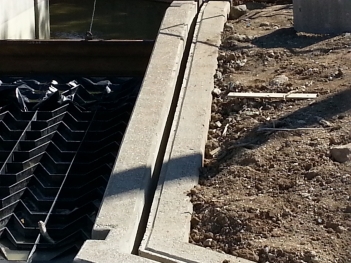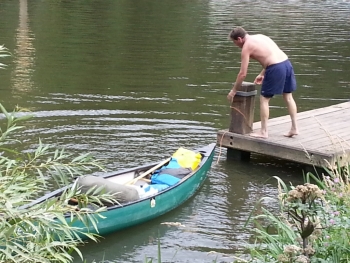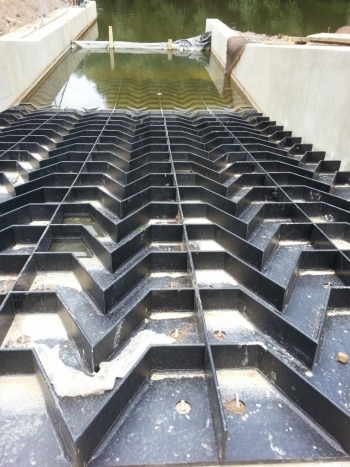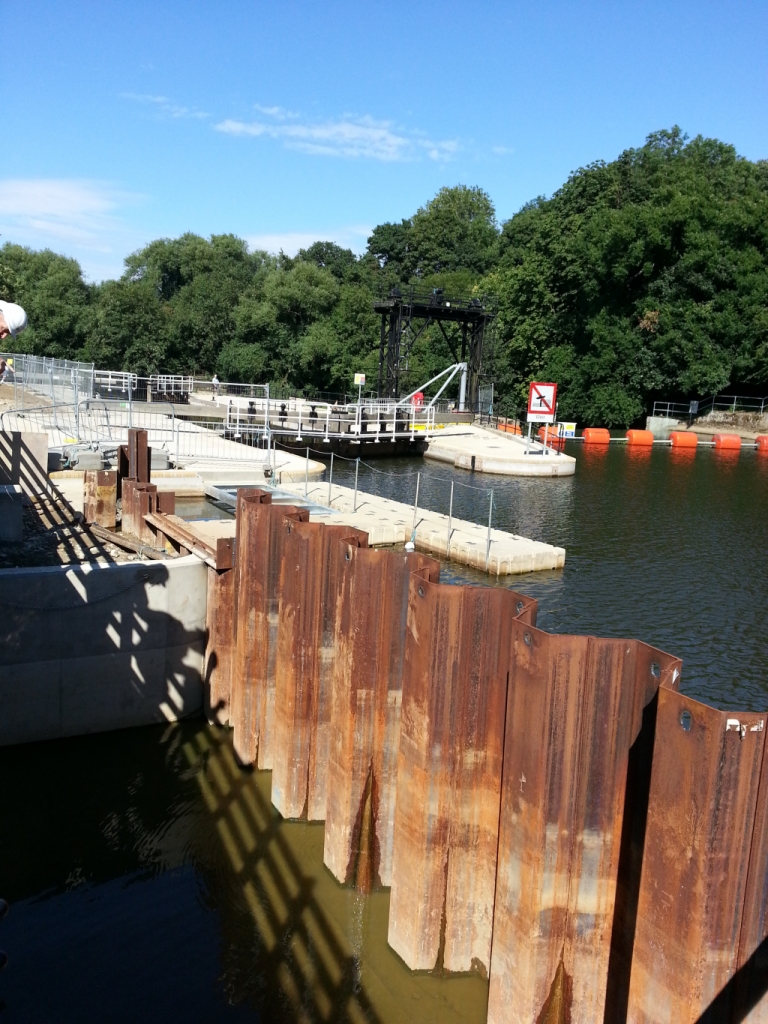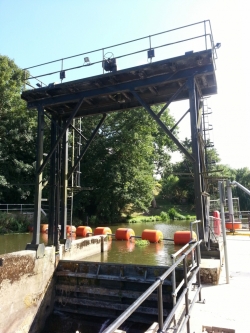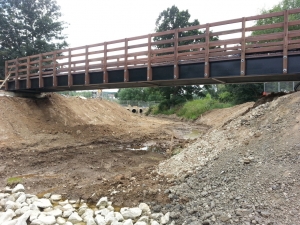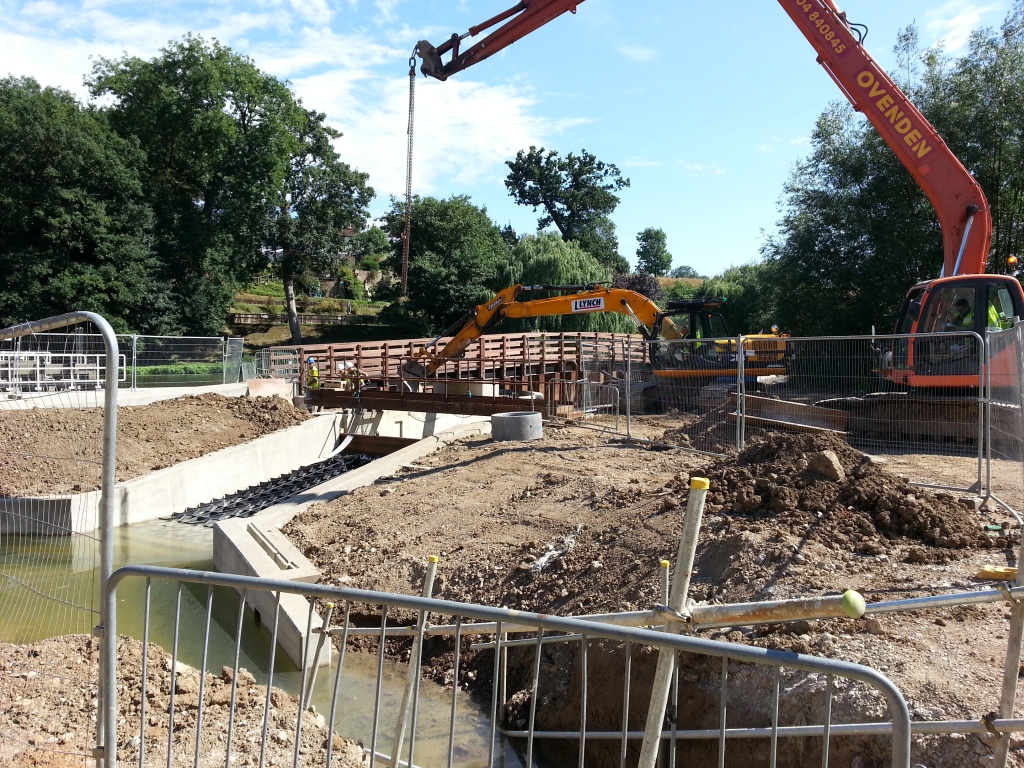LOCAL LINKS
Read LIFELINE
here (our village newsletter) and
the East Farleigh Grapevine!
West Farleigh Sports Club for football, cricket & great parties
All Saints church services...
...and hall for hire
Loads of useful contacts
Links along the valley: parishes, churches & halls
Follow us
on Facebook
Subscribe to our events email!
What's happening at Teston Lock?
As you cross the ancient bridge (above), you may wonder at the substantial building site that surrounds the Lock. A roadway has been constructed across Teston Country Park to the river and there are cranes and a number of portacabins. Security is tight; the whole site is surrounded by a tall chainlink fence, there are floodlights at night and sometimes a vehicle conspicuously marked ‘DOGS’. The project clearly has something to do with repairing the lock, and most visitors will have heard that it also has something to do with fish.
The area affected seems large, and the project long (it started in November 2012 with an original delivery date of February 2013). When is it going to finish and anyway, what will we get for our money?
This article tries to answer these questions. It is based on material and photos from a site visit kindly organized by Philip Munslow, the Waterways Operations Manager for the Medway and the primary customer for this project.
I’ve organized this article into 4 parts:
You can start where you like!
1. The Medway Lock system: when and why?
What are locks for? Locks make rivers navigable. They make it possible for boats to go up and down the river, by converting fast flowing shallow streams into flows that are deeper and slower. Today pleasure boats dominate the river traffic on the Medway, but back in 1740, when an Act of Parliament set up the Medway Navigation Company and encouraged the construction of a system of locks between Maidstone and Tonbridge (actually all the way to Forest Row! See Tonbridge History), the goal was commercial.
Transport to Tonbridge was poor; the roads were bad and the railway did not yet exist. A navigable river was the most practical way of transporting coal and heavy materials upstream, and to bring the agricultural products of the Weald downstream. The river was made navigable as far as Tonbridge (which is as far as it ever got) by 1747 and for the next hundred years, barges carried traffic in both directions. There was no towpath, so teams of men pulled the 30 ton barges along!
However by the second half of the 19th century, there was competition from the railways which the Medway Navigation Company tried to fight off. In 1911, disaster struck. The lock at East Farleigh collapsed and the river became unnavigable. Shortly afterwards, the Medway Navigation Co went bankrupt. It was however soon replaced by a publicly owned Conservancy Board set up by another Action of Parliament. This body rebuilt the lock system with bigger locks, so that larger barges could be used, especially barges carrying coal. However commercial traffic never prospered on the river again.
There are now 10 locks on the Medway and they stretch downstream starting with Tonbridge..Elridges..Porters..East Lock..Oak Weir..Sluice Weir..to Hampstead, Teston and East Farleigh and finally on to Allington (salty water beneath that). The total length of navigable water is 32kms or about 20 miles in old money.
Each lock has a fall i.e. the difference between the water level at the top and the bottom, of about 1.8m.
2. Objectives of the Teston Lock project
The finished article will (we hope!) improve on the author's drawing but here's the basic idea:
2.1. The first objective: repair the lock itself
This is the primary objective and justification for the £2.4m project budget. The walls of the old lock (which was first constructed in 1913) are crumbling. Locks and weirs are under constant attack from the water, from erosion and flooding. Rather than rebuilding the entire lock, the engineers constructed new lock walls within the existing lock.
The refurbished lock (see left) has got a number of features which improve things for boaters. For example, steps going down the side so that one can climb out of the lock even when the lock is on low water, better fenders and new moorings. The lock gates themselves have been refurbished and re-used. The newly refurbished lock will now guarantee navigation at this location for at least the next 70 to 80 years.
2.2. Encouraging fish and eels
The construction of a fish pass and its neighbouring eel channel will enable these creatures to make their way upstream to breed. Even fish that do not migrate benefit from fish passes, since they are able to pass up and down the river, taking advantage of local food sources and forming larger interbreeding groups.
The European eel has suffered a dramatic decline in numbers (up to 95%) from historic levels. The eel pass at Teston is a thin, high walled channel (see picture) with boards on one side that have tufts or bristles sticking out horizontally. The eels are able to wriggle their way up this channel and so head upstream to breed. There is a demand – recently 2,000 eels were counted passing through Allington Lock via its eel pass – all within 24 hours.
And I am told that at the right time of year the weir pool by the Anchor pub at Yalding teems with fish trying to go upstream - but unable to.
Of course, there’s not a lot of point having fish and eel passes upstream if there are locks downstream which are still impassable! The Environment Agency have been installing these passes when doing other repairs and projects, starting in 1999 and Teston is No. 8 out of the 10 locks. East Farleigh, downstream, is now the key barrier. East Farleigh will shortly have a fish/eel pass (but no canoe slipway, it is too steep) and the fish will be free to swim from Allington to Tonbridge when the fish pass at Yalding Anchor is built. No hard dates for these but there is confidence from Medway management that these projects will happen soon.
2.3. Improving the canoeing facilities
The Medway canoe trail stretches from Allington to Tonbridge and over the past few years this has gradually been improved by adding “log flume” type slides called canoe passes which enable intrepid canoeists to slide down beside the locks without having to get out and carry their canoes overland. These flumes are ingenious structures which allow canoes to slide down and fish to jump over (see picture).
3. Progress to date
Lock projects have two particular challenges not faced by most building works:
The work on Teston Lock started in November 2012 with the construction of a substantial coffer dam made of 11m high steel sheets pounded 7m into the river bed (see picture).
The original intention was to complete the lock work by Feb 2013. However the condition of the lock revealed by the coffer dam was much worse than expected (see photos from April 2 visit), and the weather did not help. In the end the lock was re-opened for the second May Bank Holiday.
Even then, there were problems with the downstream lock gates, which were difficult to open and close and needed further adjustment. This was fixed during one week in July and this part of the project is now essentially complete.
The project team are now focused on the bypass channel (see photos further down) which is going to carry canoes down and fish upstream.
This channel is not new; it was used in 1974 to carry the flow while the Teston Sluice gate was being constructed (you can see the Sluice Gate, which automatically regulates river flow, between the lock itself and the weir – see picture on the left).
This 1974 river channel has now been dug out and two canoe compatible fish ladders – one at the top end and the other at the bottom end of the channel – have been constructed for the fish/canoes to pass through.
Two ornamental footbridges over the passage are under construction which will enable the public walking along the river to access the lock area (see pictures). The project team plan to open these bridges and this area to the public by the August 2013 bank holiday – in other words, any day now!
The final part of the project is the landscaping of the area between Teston Lock and Teston Country Park. This is going to be formed into bunds or butterfly banks (facing east and south east) which will encourage breeding butterflies. This is a tidy use of the earth which has been excavated from the bypass channel.
This last part will be complete (according to the plan!) by the end of September 2013. All the fencing will be taken down, the portacabins and the lights will disappear and the temporary roadway replanted with grass.
The waterways project team feel that this project has suffered every obstacle they could have imagined and a few extra, but it does seem that it is almost over and the many improvements will be enjoyed by walkers, boaters, canoeists, fish, eels and butterflies in the years ahead.
Stephen Norman 11 August 2013
|

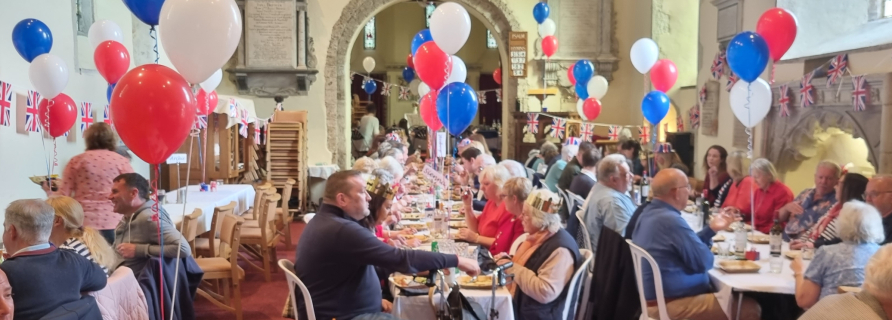
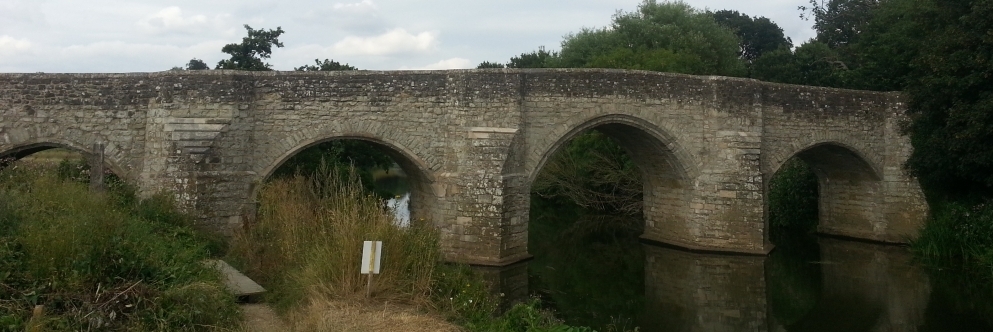
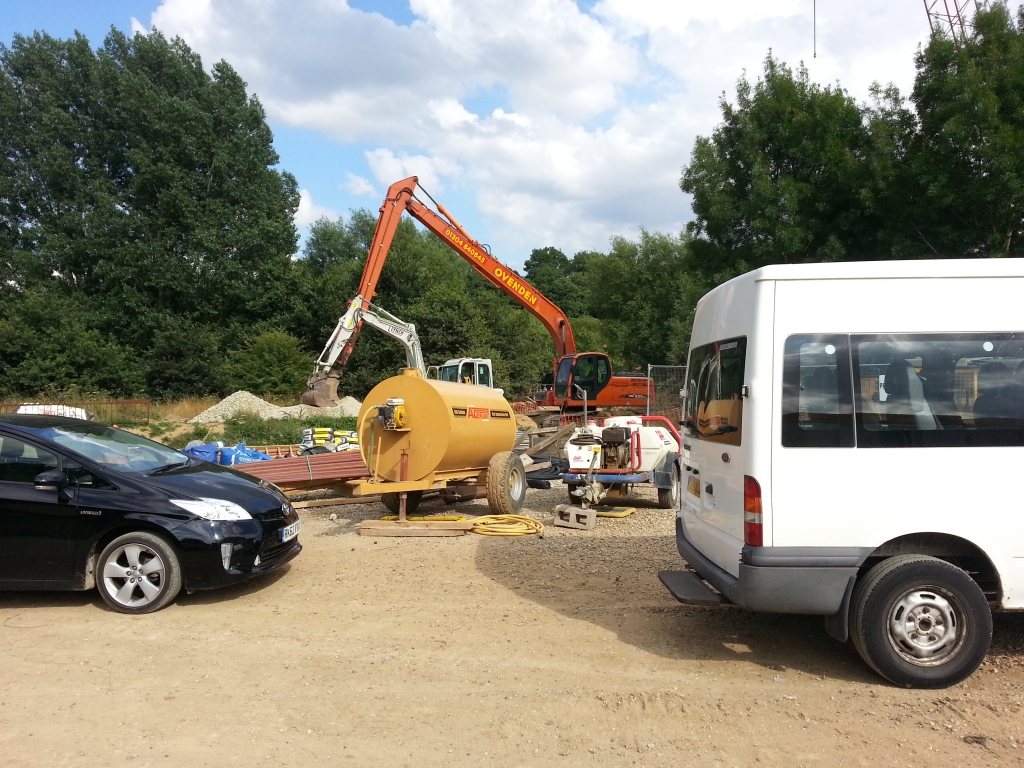
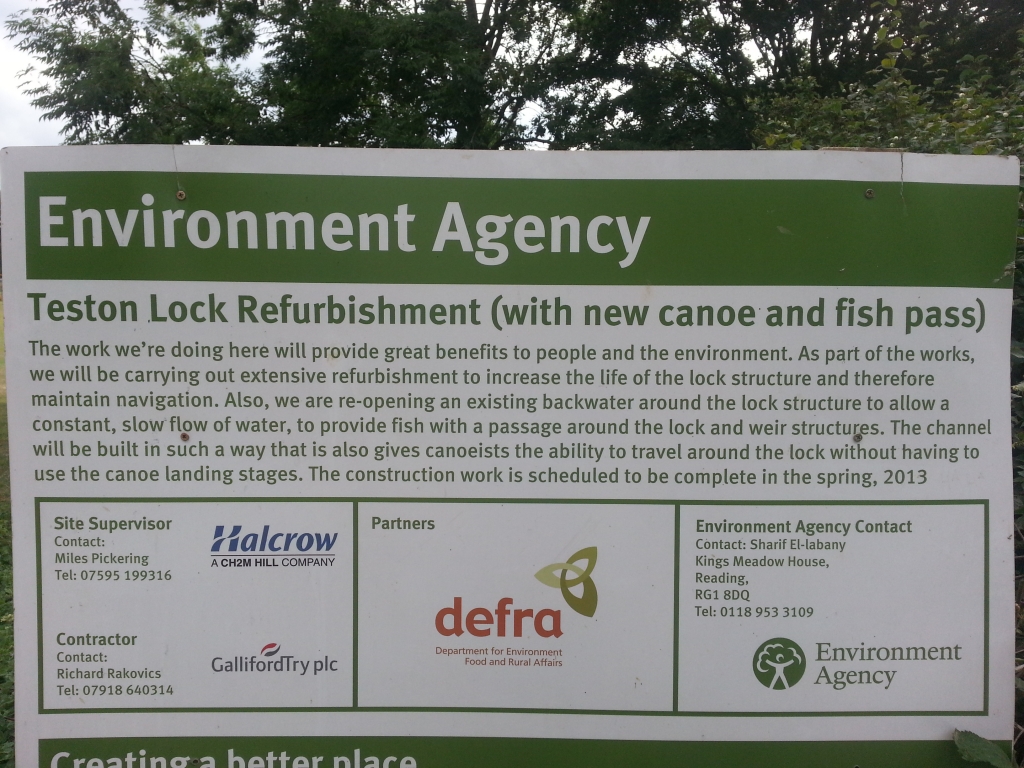
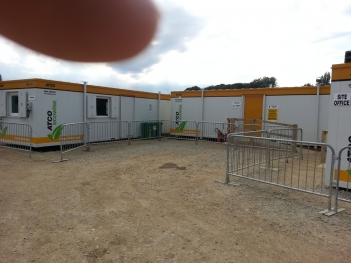
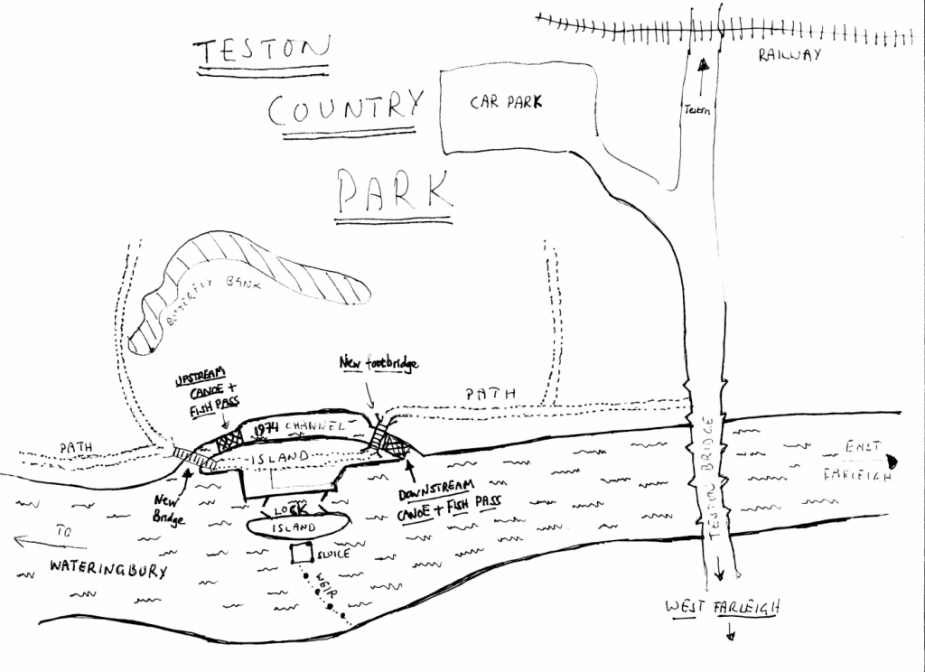
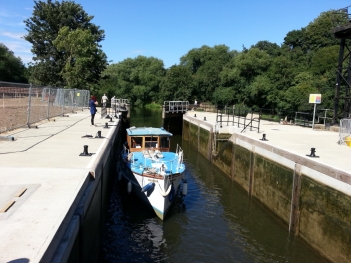
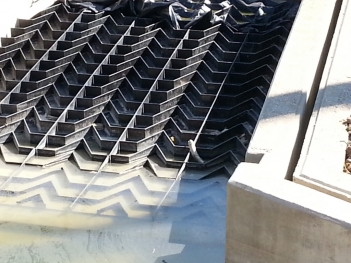 Migratory fish like sea trout, salmon and eels swim upstream to spawn, and they often have to leap up small waterfalls and pass through swift flowing water to make it.
Migratory fish like sea trout, salmon and eels swim upstream to spawn, and they often have to leap up small waterfalls and pass through swift flowing water to make it. 